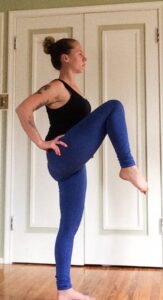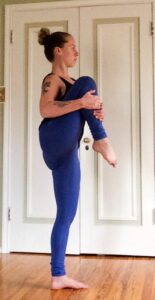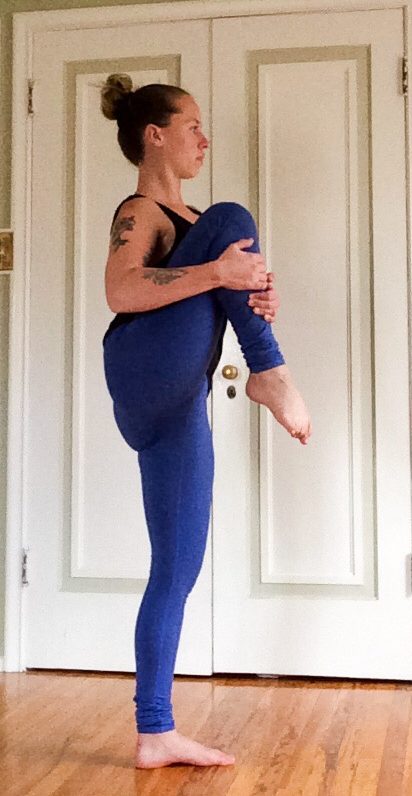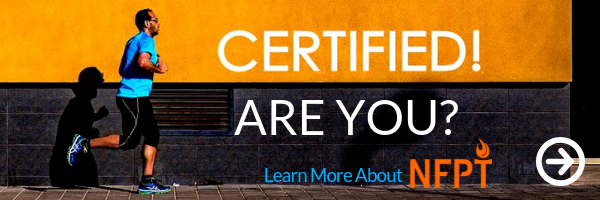Mobility work is a rising star in the fitness world, and knowing how Passive and Active Range of Motion (ROM) fits into it can assist every personal trainer with achieving their clients’ goals safely and effectively. What was once seen as minimally important to the workout regimen, is now making a name for itself.
So what should you be watching for with your clients?
As a personal trainer, the terms Active and Passive ROM are familiar old friends. It’s one of the first things taught when learning about joints and the musculature system. Lately, I’ve been revisiting these concepts and reflecting on their real-life applications.
As my work in yoga grows, I see so many of my students and clients forcing their bodies into positions the body’s tissues cannot support. It seems these important aspects of mobility are being lost in the cracks. My grasp and implementation of these Active and Passive ROM are so deeply rooted I’m occasionally blinded to the fact that the client isn’t in cahoots with Active ROM.
Back to Basics
One of the first things I go over with new clients is Active and Passive ROM. All the body’s joints have particular degrees of motion. Some of the joints can increase their ROM when assisted by an external force, such as a wall or strap.
The tissues surrounding the joint are relaxed and not supporting the joint in the end position when employing a Passive ROM. When the external force is removed the joint is not able to maintain the position.
Active ROM is when the joint is moved to its end position using the tissues of the body. Imagine raising straight arms overhead and holding them there. This is employing the shoulder’s Active ROM.
What’s the Issue?
You want to look for major discrepancies between Active and Passive ROM or a deficit in Passive ROM; this is when risk of injury increases and problems can arise.
When the difference between the two ROMs is large, it is most likely the Passive is greater than the Active. Mechanically the limb can be moved to a certain degree but the nervous system can’t support the range on its own. This is when someone has good flexibility, but poor mobility. When this is the case, it’s important to help a client build strength and gain body awareness so the limb’s ROM is reinforced.


However, what tends to be more common is a significant deficiency in Passive ROM. When Passive ROM is lacking it will make Active ROM challenging and sometimes painful. This usually goes one of two ways: the individual decreases activity because it is uncomfortable to move, or they push through the discomfort and compensate in other areas of the body.
Improving and maintaining a client’s ROM will positively impact their workouts and their activities of daily life. For best results and time efficiency, use dynamic and active mobility drills instead of static stretching for 5-10 minutes at the beginning of a session, and if you have time, ending with mobility work, as well.
Employing an entire program dedicated to mobility like Kinstretch, is also an option for those wanting to explore their body’s full potential.
ROM and Weight Lifting
Once a client has a good understanding of their joint ROM, I have them apply this information to their strength training. Often a client will cut a rep short, not following through a full ROM. I usually see it in exercises like Lat-Pull Downs. The elbow doesn’t fully extend on the eccentric contraction and the bar isn’t pulled close enough to the collar bone in the concentric contraction. This can happen in any lifting exercise. Overhead shoulder press, Bench Press, Deadlifts, Lunges, you get the picture.
Lifters of all experience levels tend to believe “the heavier the better”. Yet, this isn’t always true. If you load a movement with weight so heavy that ROM is sacrificed, then strength is not gained in the end ranges. Moving a joint through its full ROM when loaded will encourage proper engagement of working tissues, improve musculature balance and reinforce joint stability.
Ultimately, accessing full ROM when lifting will create a stronger body that is able to produce force and give support through all the joint’s positions. This practice will also result in a more functional outcome than just being able to move a heavy load through a certain limited degree of motion. When the body has strength and control through a joint’s full ROM, this means Active and Passive ROM is being improved and maintained.
It is important to have lifting days where a client is working at maximum capacity; this can mean full ROM isn’t always accessed in their last reps. This is okay because it is how strength gains are made, working to failure. However, it is also important to have days where the weight is slightly dropped and the focus of the sessions is intentional, controlled, quality movement.
Control the Eccentric
During the sessions a client is targeting full ROM, I also focus on how they are moving through their eccentric contraction. Instruct the client to mindfully move through this “controlling” segment of the exercise, rather than allowing the weight to “fall” through the eccentric contraction.
This can easily be demonstrated with a Bicep Curl. Explain when they extended the elbow to the starting position this should be a controlled contraction. Actively moving so muscles are still properly engaged and the load is being supported instead of gravity pulling it down. Have the client apply this to all the lifting exercises.
Prioritize Mobility
Proper mobility is a vital piece in a well-rounded fitness routine. Mobility work isn’t just holding static stretches. It is also implementing quality movement in all physical activities. Maintaining healthy joint mobility not only contributes to joint longevity but improves quality of life.
Keep talking to your clients about how they are moving and what their ROM looks like, proper body mechanics is an important piece to a healthy and happy body.
_____________________________




